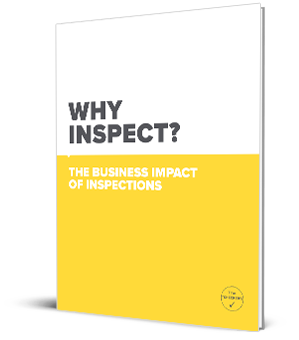Developing and implementing a strong inspection system requires determining the type of inspections to conduct and who is responsible for seeing they’re completed. It also includes knowing how often inspections should be done and adhering to that schedule.
Regulatory requirements are only the minimum—not necessarily the most productive schedule for your organization.
Why Inspect More Frequently
Performing inspections more often than required is in every company’s best interest because inspections decrease cost and increase safety.
The minimum is important, however. Compliance with regulations provides protection. If you need to defend your company against liability claims or lawsuits, demonstrating due diligence with inspection records can play a decisive role.
Most importantly, inspections protect people from injury and death.
Time is important. Personnel conducting inspections should be able to carry them out in a way and at a time that doesn’t interfere with production processes. For example, if the point of inspection doesn’t require it, inspecting equipment during heavy workflow periods should be avoided.
Workplace Inspections
When considering the frequency of workplace safety inspections, you should consider factors such as:
- Historical records of near-misses and incidents
- The number of shifts at the workplace
- Familiarity of staff with equipment processes
- Total number of work hours at the workplace
- The riskiness of your business
To ensure adequate and thorough inspection of your equipment, you will need to rely on equipment-specific inspection checklists. These checklists will help ensure that:
- Staff is taking good care of the equipment
- Any damage or defect is detected on time and is repaired immediately before it causes equipment downtime and other expense
- No piece of equipment is at risk of disrupting daily operations
- No one is put in danger of costly and potentially fatal on-the-job injuries.
The Checker equipment inspection checklist books can provide:
- Assurance that each piece of equipment is inspected properly according to comprehensive, equipment-specific checklists
- Assurance that all inspection items are checked
- Documentation that all inspections are performed regularly (for liability protection and regulatory compliance).
Takeaway
Inspecting minor pieces of equipment prior to every use is probably not that practical. However, when handling equipment that could harm the person operating it or others in the near vicinity, pre-use inspections are essential to workplace safety.
Thanks to The Checker inspection checklists and The Checker cloud-based inspection software, your staff will be able to quickly perform thorough inspections to mitigate risk and lower costs.











